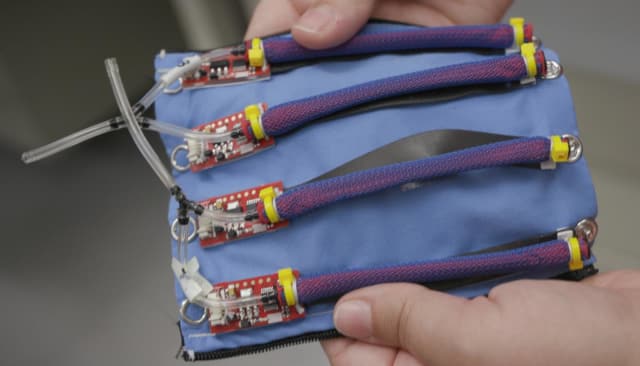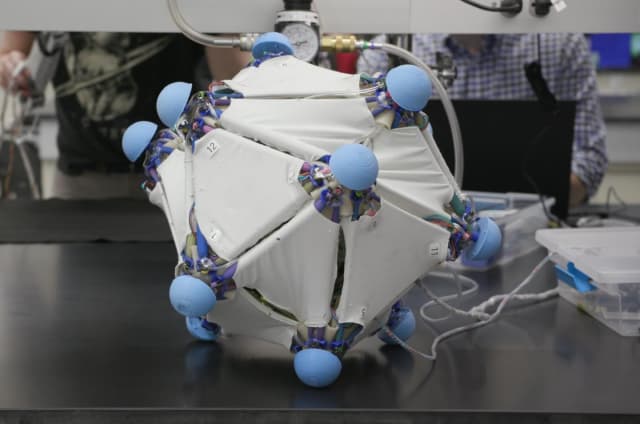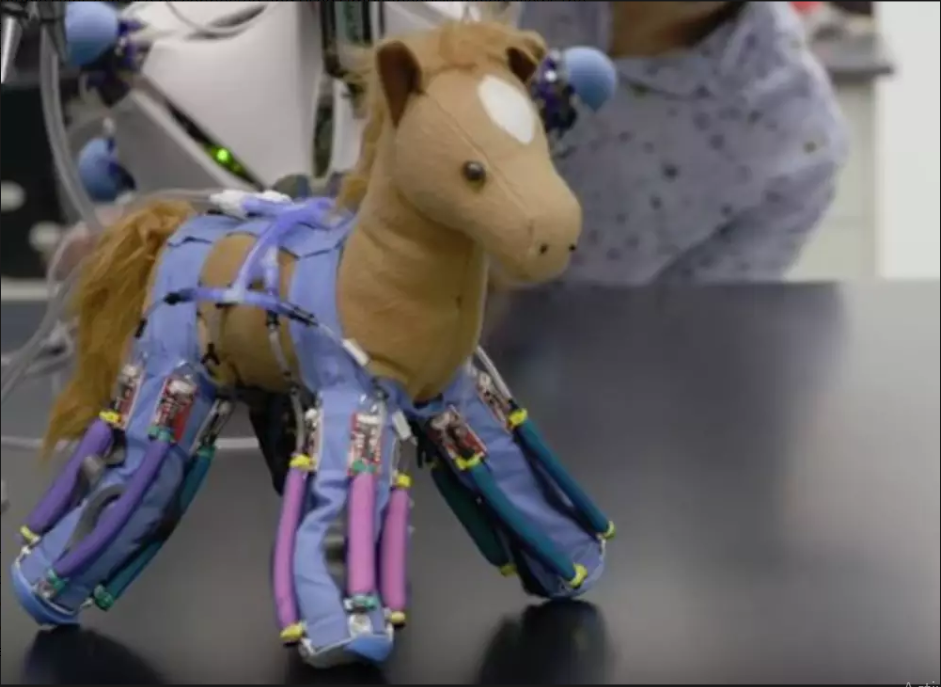When it comes to robots, most of us either want to have one, or want to build one. While sometimes it's the challenge that appeals—designing and creating a robot from scratch—what if you could just add robotic components to a regular, everyday object and turn it into a robot?
A lot of robotics are designed and built for a specific purpose, and are often heavy, rigid and awkward. Soft robotics are a hot field of research, and some new tech dubbed "robotic skins" challenges the idea that robots can only be purpose built, instead allowing users to animate the inanimate and turn just about anything into a robot.
The robotic skins are being developed at Yale University, in the lab of Rebecca Kramer-Bottiglio, assistant professor of mechanical engineering & materials science. These robotic skins are flexible and customizable, which enables users to design and create their own unique robotic systems. The skins are designed to be multi-purpose and have no dedicated task in mind, explained Kramer-Bottiglio.
That’s the beauty of these robotic skins—they can be configured for use in almost any application, from building search-and-rescue robots that can get into tiny spaces, to designing wearable technologies that bend and flex with the body.
How Do You Make Robotic Skin?
There’s a wealth of different ways to make soft robotics these days. In the case of these robotic skins, the used elastic sheets embedded with sensors and actuators developed in Kramer-Bottiglio's lab. When the skins are placed on a deformable object, for example, a stuffed animal or a foam tube, the skins animate these objects from their surfaces, enabling them to move or deform. These makeshift robots are able to perform different tasks depending on the properties of the soft objects and how the skins are applied and attached to the objects.

Sensors and actuators on a rubber sheet make up the robotic skin being developed at Yale University. (Image courtesy of Yale University.)
"We can take the skins and wrap them around one object to perform a task—locomotion, for example—and then take them off and put them on a different object to perform a different task, such as grasping and moving an object," Kramer-Bottiglio said. "We can then take those same skins off that object and put them on a shirt to make an active wearable device."
Most robots are designed and built with a single purpose in mind, which means that while those robots might be extremely good at their single purpose, their use is otherwise limited. Using soft robotic skins instead, users can create customized, multi-functional robots quickly and easily. That means the skins can be used in settings that hadn't even been considered when they were designed, said Kramer-Bottiglio.
Multiple skins can also be connected and used simultaneously, which allows the objects to perform more complex movements. For instance, Kramer-Bottiglio said, you can layer the skins to get different types of motion. "Now we can get combined modes of actuation—for example, simultaneous compression and bending."
The research team developed a variety of prototypes to demonstrate the robotic skins in action, and the different movements that are possible. the researchers created a handful of prototypes. These include foam cylinders that can move like an inchworm, a shirt-like wearable device designed to help correct poor posture, and a device with a gripper that can grasp and move objects.
Customizable, Reconfigurable and Multifunctional Soft Robotics for Space Exploration
Kramer-Bottiglio described how the idea for these soft robotic skins grew out of a NASA open call for soft robotic systems a few years ago. In partnership with NASA, Kramer-Bottiglio developed the robotic skins, with an emphasis on how their multifunctional and reusable nature would allow astronauts to accomplish an array of different tasks using the same components of reconfigurable material. For example, the skins could be used to make a robotic arm out of a piece of foam, then be removed and applied to other components in a different configuration to create a soft Mars rover capable of rolling over rough terrain.
With the robotic skins on board a spacecraft, Kramer-Bottiglio pointed out, anything from balloons to balls of crumpled paper could potentially be made into a robot with a purpose that could complete useful tasks.

The robotic skins can be reconfigured for different tasks, such as this system capable of rolling around. (Image courtesy of Yale University.)
"One of the main things I considered was the importance of multifunctionality, especially for deep space exploration where the environment is unpredictable," she said. "The question is: How do you prepare for the unknown unknowns?"
For the same line of research, Kramer-Bottiglio was recently awarded a $2 million grant from the National Science Foundation, as part of its Emerging Frontiers in Research and Innovation program.
For the next stage of research, she said, the lab will be working to streamline the robotic skin systems and exploring the possibility of 3D printing the components.
The results of the team's work are published in Science Robotics.
